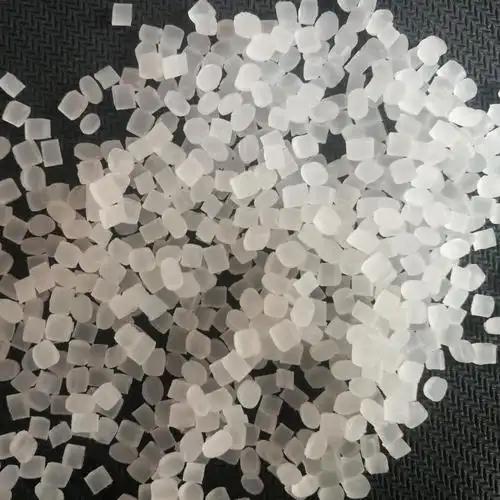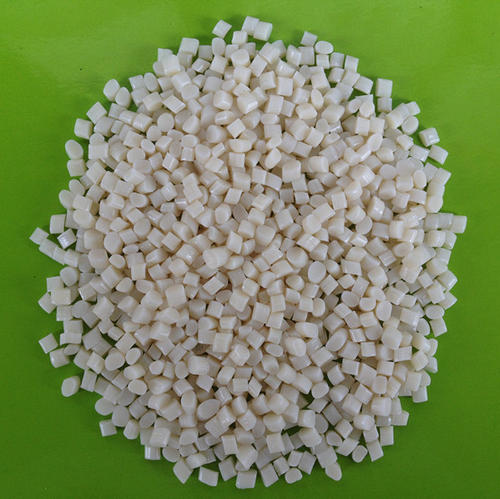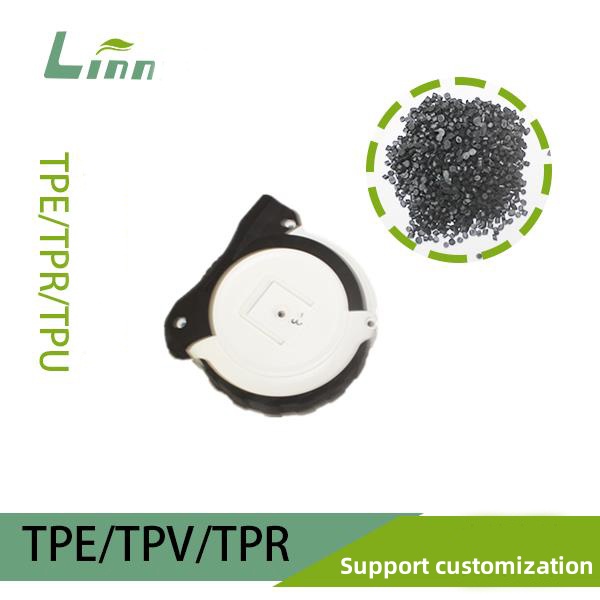As someone who’s been navigating the plastics and elastomer industry for over a decade, I’ve seen the ups and downs of material pricing, especially for Thermoplastic Rubber (TPR). If you’re here, you’re likely wondering about the current price of TPR raw materials per ton, perhaps for budgeting a new project, negotiating with suppliers, or simply staying competitive in your market. Let me share my insights, grounded in years of experience and the latest market trends, to help you make sense of TPR pricing in 2025.

Understanding TPR and Its Market Relevance
Before diving into the numbers, let’s get a quick grasp of what TPR is. TPR is a versatile material that blends the elasticity of rubber with the processability of thermoplastics. It’s widely used in industries like footwear, automotive, medical devices, and consumer goods due to its flexibility, durability, and cost-effectiveness. From shoe soles to gaskets, TPR’s ability to be molded into complex shapes while maintaining a rubber-like feel makes it a go-to choice for manufacturers.
The price of TPR raw materials isn’t just a number—it’s influenced by a web of factors, including raw material costs, global demand, and supply chain dynamics. My goal is to break this down for you, so you can approach your purchasing decisions with confidence.
Current Price Range of TPR Raw Materials in 2025
Based on my industry contacts and recent market data, the price of TPR raw materials in 2025 typically ranges between $1,470 and $2,250 per metric ton. However, this range can vary depending on several factors, such as the specific TPR grade, supplier location, and order volume. For instance, standard TPR grades used for general applications like shoe soles tend to lean toward the lower end, while specialized grades for medical or high-performance industrial uses can push prices higher.
Here’s a breakdown of typical price ranges for different TPR types:
|
TPR Type |
Price Range (USD/ton) |
Common Applications |
Key Characteristics |
|---|---|---|---|
|
Standard SBS-based TPR |
$1,470–$1,800 |
Shoe soles, grips, toys |
Cost-effective, flexible |
|
SEBS-based TPR |
$1,800–$2,100 |
Medical devices, outdoor gear |
UV-resistant, soft-touch finish |
|
High-performance TPR |
$2,100–$2,250 |
Automotive parts, industrial seals |
Enhanced durability, chemical resistance |
This table reflects global averages, but regional differences exist. For example, in Asia, particularly China, prices may skew slightly lower due to high production volumes and abundant supply, while in Europe or North America, logistics and import costs can nudge prices upward.
Factors Influencing TPR Prices
Over the years, I’ve learned that TPR pricing is anything but static. Here are the key drivers I’ve observed:
1. Raw Material Costs
TPR is primarily derived from styrene-butadiene-styrene (SBS) or styrene-ethylene-butylene-styrene (SEBS), blended with resins like polypropylene (PP) or polystyrene (PS). The cost of these base materials, especially ethylene and crude oil, plays a significant role. In 2023, a decline in ethylene and crude oil prices pushed TPR prices downward, but fluctuations in 2025 have kept the market on its toes. For instance, if propylene prices rise due to supply constraints, you can expect a ripple effect on TPR costs.
2. Global Demand and Industry Trends
Demand from industries like automotive, particularly for electric vehicles, has kept TPR prices stable in Asia and North America. However, weaker sectors like construction, affected by high mortgage rates, can dampen demand and soften prices. In my experience, keeping an eye on end-user industries helps predict price trends. For example, the growing popularity of sustainable TPR production in India has boosted demand, nudging prices slightly higher in that region.

3. Supply Chain and Logistics
Logistics challenges, like those caused by Red Sea trade route disruptions in 2023, can inflate costs. While 2025 has seen some stabilization, port congestion or shipping delays can still impact prices, especially for importers in Europe or the US. I’ve seen clients save significantly by sourcing locally or negotiating bulk deals to offset these costs.
4. Supplier and Order Volume
The supplier you choose and the volume you order can make a big difference. Large manufacturers in China, like Xiamen Keyuan Plastic Co., often offer competitive prices for bulk orders (e.g., 1–20 tons), with FOB prices ranging from $1,400 to $2,100 per ton. Smaller orders or specialized grades from niche suppliers can cost more. My advice? Always request quotes from multiple suppliers and verify their certifications to ensure quality.
Regional Price Variations
Having worked with clients across the globe, I’ve noticed distinct regional price patterns:
Asia (China, India): Prices are generally lower, ranging from $1,400 to $1,900 per ton, due to high production capacity and proximity to raw material sources. China’s market, in particular, benefits from abundant supply, though demand fluctuations can cause slight dips or spikes.
Europe: Expect prices between $1,600 and $2,100 per ton, influenced by import costs and stricter environmental regulations. The European market faced challenges in 2023 due to low demand and port disruptions, but 2025 shows signs of stabilization.
North America: Prices align closely with Europe, around $1,600 to $2,200 per ton, with logistics and energy costs playing a role. The US market has seen steady demand from the automotive sector, supporting price stability.
How to Get the Best Price for TPR Raw Materials
Over the years, I’ve picked up a few strategies that have helped my clients secure cost-effective TPR deals:
Compare Multiple Suppliers: Platforms like Made-in-China.com or Alibaba list verified suppliers with transparent pricing. For example, Suzhou Topo New Material Co. offers TPR at $1.285–$1.45 per kg for bulk orders, while smaller suppliers may charge $2–$5 per kg for specialized grades.
Negotiate Bulk Discounts: Ordering in larger quantities (e.g., 15–20 tons) often unlocks better rates. I once helped a footwear manufacturer save 15% by consolidating their order with a single supplier.
Monitor Market Trends: Use resources like Procurement Resource to track TPE/TPR price trends. Their data suggests prices will remain stable in Q4 2025, with modest support from automotive demand.
Consider Local Sourcing: Importing can add 10–20% to costs due to shipping and duties. If you’re in North America, explore US-based suppliers to reduce logistics expenses.
Verify Quality: Cheap TPR (as low as $700 per ton online) is often recycled or low-grade, leading to poor performance. Always request samples and certifications like ROHS or EN71-3.

Practical Applications and Cost Considerations
TPR’s versatility makes it a favorite across industries, but pricing impacts project budgets differently. For example:
Footwear: Standard SBS-based TPR at $1,470–$1,800 per ton is ideal for shoe soles due to its flexibility and traction. A small factory producing 10,000 pairs monthly might spend $5,000–$7,000 on TPR, factoring in waste and processing costs.
Medical Devices: SEBS-based TPR, priced at $1,800–$2,100 per ton, is preferred for its biocompatibility. A medical tubing manufacturer might budget $10,000 for a 5-ton order, prioritizing quality over cost.
Automotive: High-performance TPR at $2,100–$2,250 per ton is used for seals and gaskets. A mid-sized supplier might allocate $20,000 for a 10-ton batch, balancing durability with cost.
In my experience, understanding your application’s requirements—flexibility, UV resistance, or chemical stability—helps you choose the right TPR grade without overspending.
Sustainability and Future Trends
As someone who’s seen the industry evolve, I can’t ignore the growing focus on sustainability. TPR is recyclable, but its petrochemical origins raise concerns. Some suppliers now offer bio-sourced TPR, which costs 10–20% more but appeals to eco-conscious brands. In India, investments in sustainable TPR production have gained traction, potentially influencing global prices in the coming years.
Looking ahead, I expect TPR prices to remain stable in 2026, barring major disruptions in crude oil or ethylene supply. The automotive sector’s recovery, especially in electric vehicles, will likely support demand, while innovations in recycling could lower costs for recycled TPR grades.
My Takeaway
Navigating TPR pricing can feel like a puzzle, but it’s manageable with the right knowledge. Whether you’re a small business owner or a procurement manager, focus on your application’s needs, compare suppliers, and stay informed about market trends. The current price range of $1,470–$2,250 per ton offers flexibility, but strategic sourcing can save you thousands.
If you’re still unsure where to start, reach out to suppliers on platforms like Alibaba or consult industry reports from Procurement Resource. And if you’re in the market for TPR, don’t settle for the cheapest option—quality pays off in the long run.

Related Questions and Answers
Q: Why do TPR prices vary so much between suppliers?
A: Prices differ due to factors like TPR grade, order volume, and supplier location. For example, bulk orders in China may cost $1,400 per ton, while specialized grades in Europe can hit $2,100 per ton. Always request quotes and samples to compare quality and value.
Q: Is recycled TPR a good option to save costs?
A: Recycled TPR can be as low as $700 per ton, but it’s often lower quality, suitable only for non-critical applications like low-end shoe soles. For high-performance needs, stick to virgin TPR and verify supplier certifications.
Q: How can I predict TPR price trends for 2026?
A: Monitor raw material costs (e.g., ethylene, crude oil) and industry demand, especially in automotive and footwear. Resources like Procurement Resource offer price forecasts, predicting stability for 2025–2026 with potential dips if supply increases.
Q: Are there alternatives to TPR for cost savings?
A: Yes, materials like TPE-S (SEBS) or TPU offer similar properties. TPE prices range from $1,200–$2,000 per ton, potentially cheaper for less demanding applications. Consult your supplier to match material properties to your needs.
Q: How do logistics affect TPR pricing?
A: Shipping costs can add 10–20% to TPR prices, especially for imports to Europe or North America. Local sourcing or bulk orders can reduce these costs. For example, a 20-ton order from a Chinese supplier might save $2,000 in freight compared to smaller shipments.





